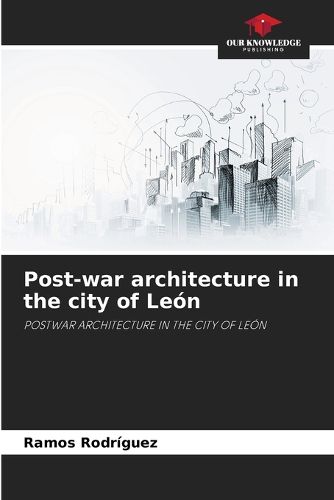Readings Newsletter
Become a Readings Member to make your shopping experience even easier.
Sign in or sign up for free!
You’re not far away from qualifying for FREE standard shipping within Australia
You’ve qualified for FREE standard shipping within Australia
The cart is loading…






This work, entitled "Postwar architecture in the city of Leon", has as its main objective to identify and analyze the architecture of this historical period in the city of Leon and to confirm the existence of a specific architecture during the first years of Franco's dictatorship, specifically the period between 1939 and the early 1950's. We have first reviewed the general historiography and then the one referring specifically to the city of Leon, of which there are hardly any studies. This is a lack that we have tried to solve with an interdisciplinary analysis that will give us a broad and human perspective of what the architectural forms erected at the end of the Civil War in Leon meant and mean. A review of the architectural-urban spaces where different buildings were constructed during this period has been carried out, showing two types of development: the center of the city was the space chosen by the regime to locate the most solemn, grandiloquent and guiding infrastructures of public life; while the periphery was the place destined to the most austere architectures.
$9.00 standard shipping within Australia
FREE standard shipping within Australia for orders over $100.00
Express & International shipping calculated at checkout
This work, entitled "Postwar architecture in the city of Leon", has as its main objective to identify and analyze the architecture of this historical period in the city of Leon and to confirm the existence of a specific architecture during the first years of Franco's dictatorship, specifically the period between 1939 and the early 1950's. We have first reviewed the general historiography and then the one referring specifically to the city of Leon, of which there are hardly any studies. This is a lack that we have tried to solve with an interdisciplinary analysis that will give us a broad and human perspective of what the architectural forms erected at the end of the Civil War in Leon meant and mean. A review of the architectural-urban spaces where different buildings were constructed during this period has been carried out, showing two types of development: the center of the city was the space chosen by the regime to locate the most solemn, grandiloquent and guiding infrastructures of public life; while the periphery was the place destined to the most austere architectures.